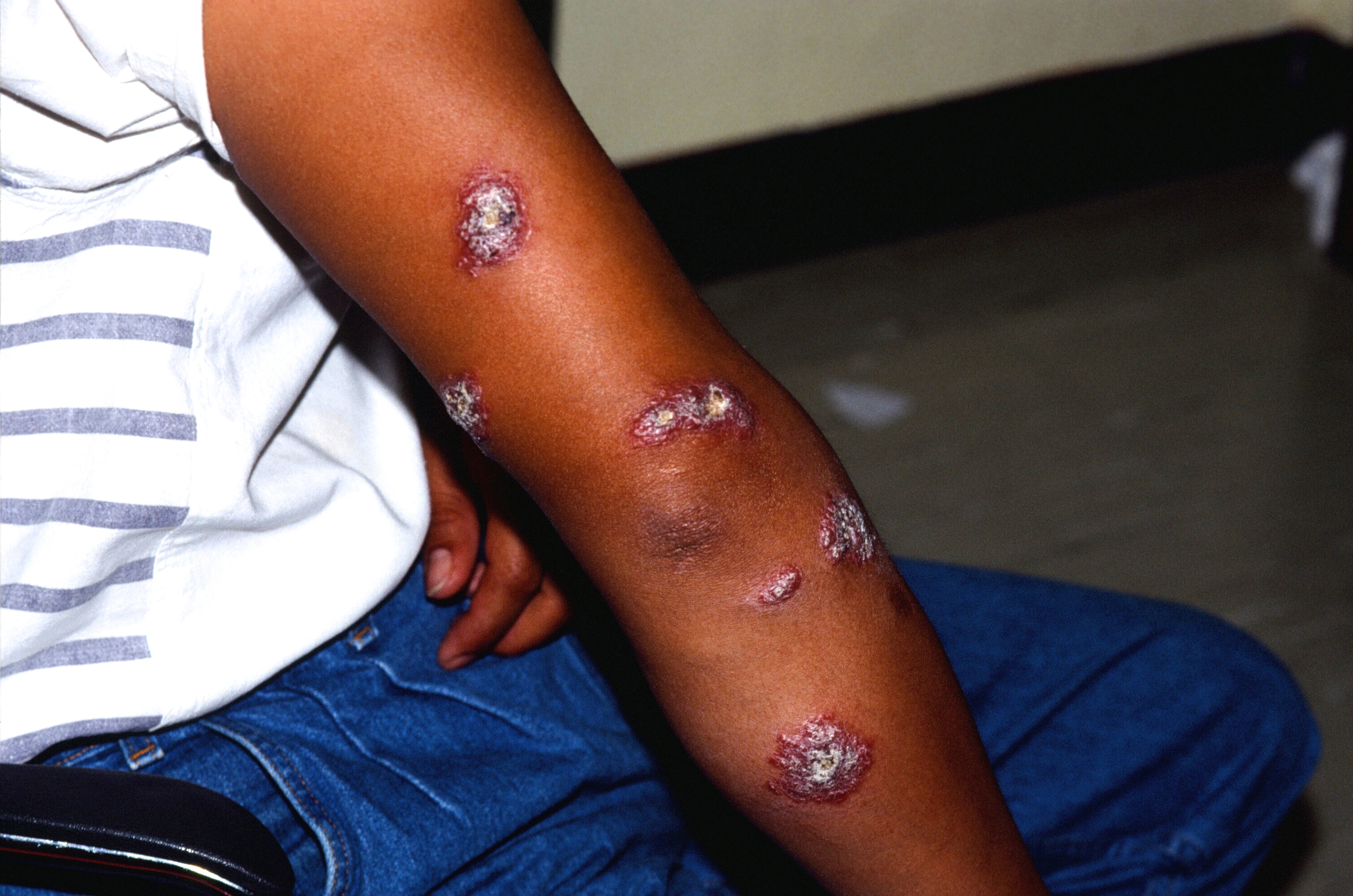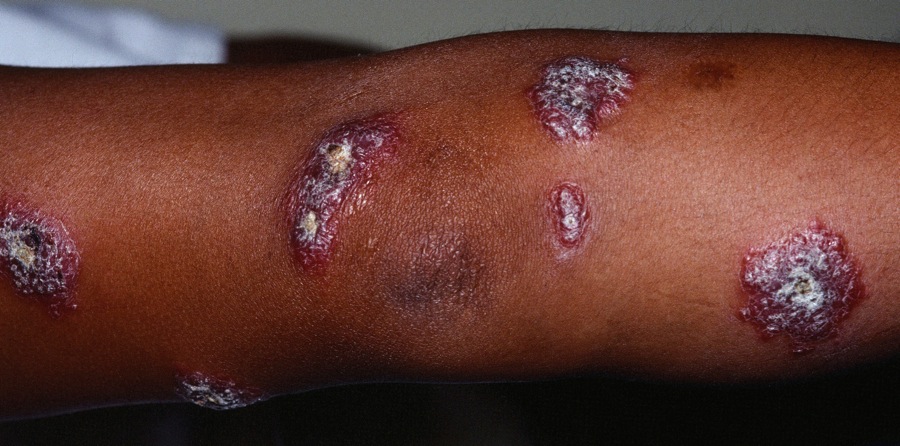

A soldier just back from Iraq developed these on the right arm.
Leishmaniasis is a term that covers a variety of patterns of infection by different species of Leishmania. Leishmaniasis in man is broadly divided into cutaneous and visceral. Leishmaniasis may be divided into Old World disease (the Mediterranean and the Northern part of Africa) and New World Disease (Central and South America). In Central and South America, L. brasiliensis is the main organism and lesions of the mucosa are common (mucocutaneous Leishmaniasis). Bites from the sand fly (Phlebotomus in the Old World) are how humans are infected.
After a bite from the sand fly typically on an exposed part of the body, a nodule forms. The incubation period is usually 1-2 months. Crusting, ulceration and finally healing with scar formation is typical. Multiple lesions are caused by either multiple bites or sporotrichoid spread along lymphatics.
Inflammatory nodules which crust, ulcerate and heal with scars occur, but in addition, mucocutaneous leisons are common. Tremendous destruction of the nose, septum, upper lip and palate may occur. Any leg ulcer in a person who lives or recently traveled to an endemic area should be evaluated for Leishmaniasis.
Homepage | Who is Dr. White? | Privacy Policy | FAQs | Use of Images | Contact Dr. White